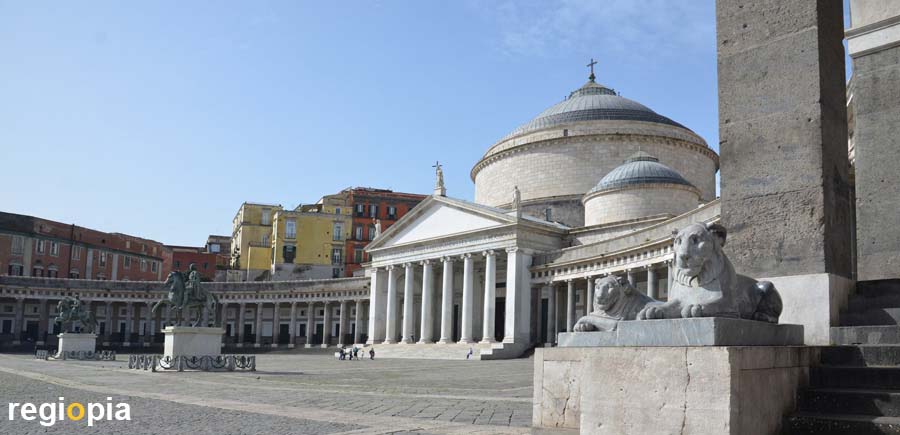
San Francesco di Paola
Franciscus de Paola was a Catholic saint who spent some time in Naples in the 15th century. Later he founded the Order of Paulaner. In his honor, the church of San Francesco di Paola was built in 1836, as he used to live here in a monastery. The building is reminiscent of the Pantheon in Rome, but has different proportions. The construction of the church was initiated by Joachim Murat, who married the sister of Napoléon and was appointed in 1808 to the King of Naples.
He planned a big place and had demolished the existing houses. In 1815, Naples fell to Ferdinand I, when Joachim Murat tried to take Naples back, he was captured and shot dead. The Piazza del Plebiscito and San Francesco di Paola were finally built by his successor Ferdinand I and his son Leopold of Naples-Sicily. The architect Pietro Bianchi erected a 53 m high dome, flanked by two smaller chapels. The church stands at the center of a curved row of columns that surrounds the square to the west. To the east of Piazza del Plebiscito stands the Royal Palace of Naples.
If you see people walking blindfolded around the square, this is a popular game. You start at the castle and try to arrive between the two riders. It looks easy but is almost impossible. I also failed miserably.
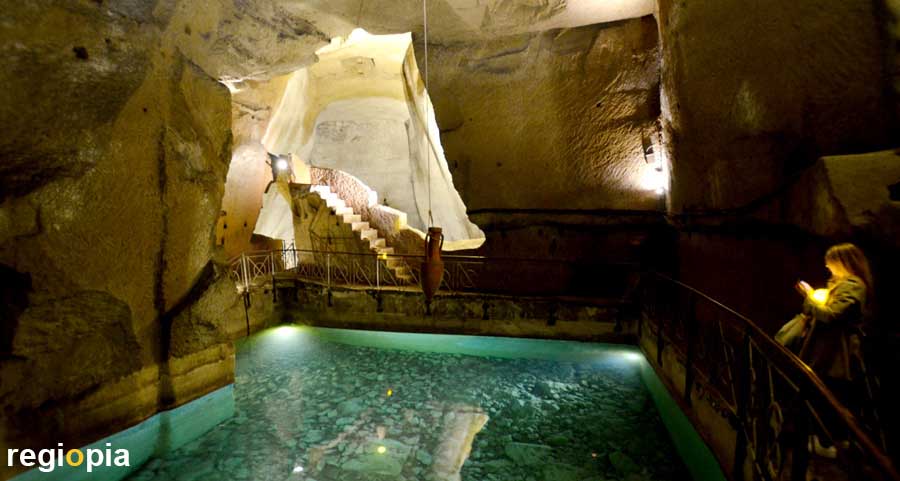
Napoli Sotterranea
Even the Greeks used the underground of Naples to gain building material for their city. Under the Romans, the tunnel system was further expanded and cisterns created. After the basins were no longer needed, the inhabitants of Naples disposed of their rubble and other waste.
The tunnel system "Sotterranea" owes its exposure to the bombing raids of the Royal Air Force during World War II. The debris and rubbish was squeezed to use the caves as air raid bunker. In the caves, plants are grown under artificial light, but these survive only a few months without sun. However, the humidity is so high that the plants do not need to be watered.
The exciting tour offers further highlights. The aisles are usually wide and high enough, only a section is a bit narrow. There are tours in English, Spanish and French. On the website of "Napoli Sotterranea" you will find the start times and prices.
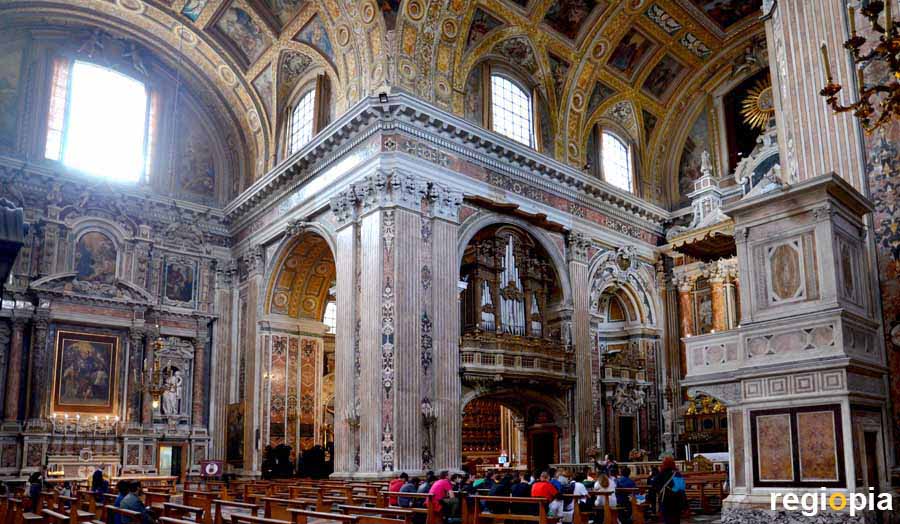
Chiesa Gesu Nuovo
The Chiesa Gesu Nuovo is the most magnificent church in Naples. The nave is almost completely covered in marble and the dome has taken the example of St. Peter's Basilica in Rome. The lower part of the church is dominated by pink marble while the lower part of the dome and the vaults have been painted with gold paint. The church also houses many large-format paintings, the most famous of which is "The Expulsion of Heliodorus from the Temple of Jerusalem" by Francesco Solimena. Images of Solimena hang among others in the Getty Museum, in the Louvre, in the Metropolitain Museum, or in the National Gallery in London.
The history of the church is also interesting. In the Gesu Nuovo church, the palace was integrated by Roberto Sanseverino, who had to sell his palace to the Jesuits. Since the Jesuits already had a church called Gesu in Naples, the church was called Gesu Nuovo (New Jesus). The Jesuits built the church between 1584 and 1601. In 1767, the Jesuits were banished from Naples and Gesu Nuova went to the Franciscans. In contrast to the interior, the boss facade made of black diamond blocks is rather stealthy.
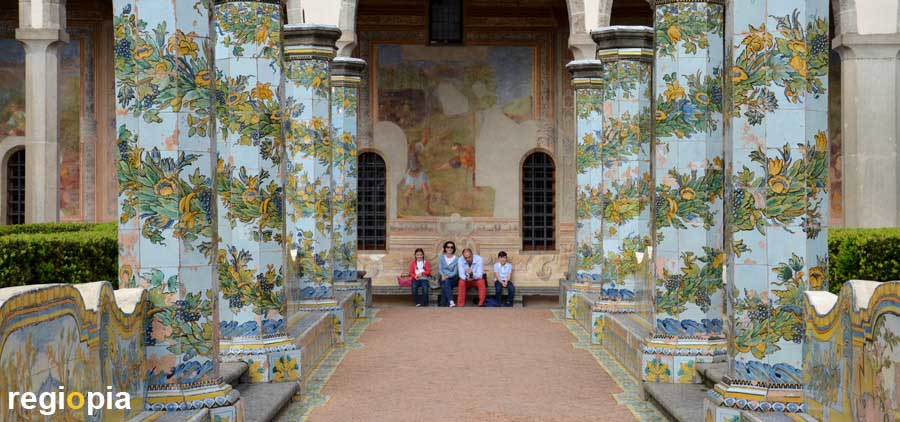
Santa Chiara
The church of Santa Chiara was built between 1310 and 1340 under King Robert of Anjou. Next to the church is a campanile. The church was built as a burial place for the Cape and Bourbon kings of Naples-Sicily. The Gothic church was decorated with baroque elements in the 18th century. After the bombing of the Allies in 1943, Santa Chiara was destroyed and rebuilt after the war in the Gothic style. The interior of Santa Chiara is therefore very simple. More famous than the church is the cloister "Chiostro delle Maioliche". The columns in the green courtyard, are covered with painted tiles (majolica), which were painted around 1740 by Donato and Giuseppe Masse with scenes from the everyday life of the time. The courtyard is surrounded by an open vaulted passage painted with religious scenes. The conversion of the monastery courtyard was commissioned by Maria Amalia of Saxony, who was Queen of Naples-Sicily from 1738 to 1759 and also built the castle in Caserta.
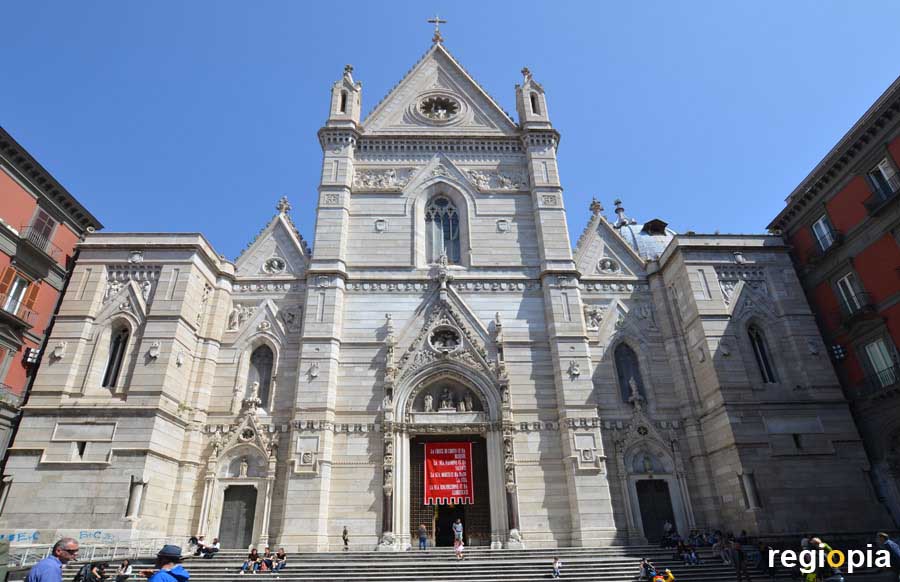
Duomo di San Gennaro
The Duomo di San Gennaro was built 1285-1309 on Greek and Roman foundations. The Cathedral was financed by Charles I of Anjou, the King of Sicily. The west facade of the Duomo was rebuilt in the 19th century by Enrico Alvino in neo-Gothic style. The "Capella di San Gennaro" is famous for the Wonder of the liquid blood. Beheaded as a martyr, the Bishop of Benevento is the patron saint against volcanic eruptions.
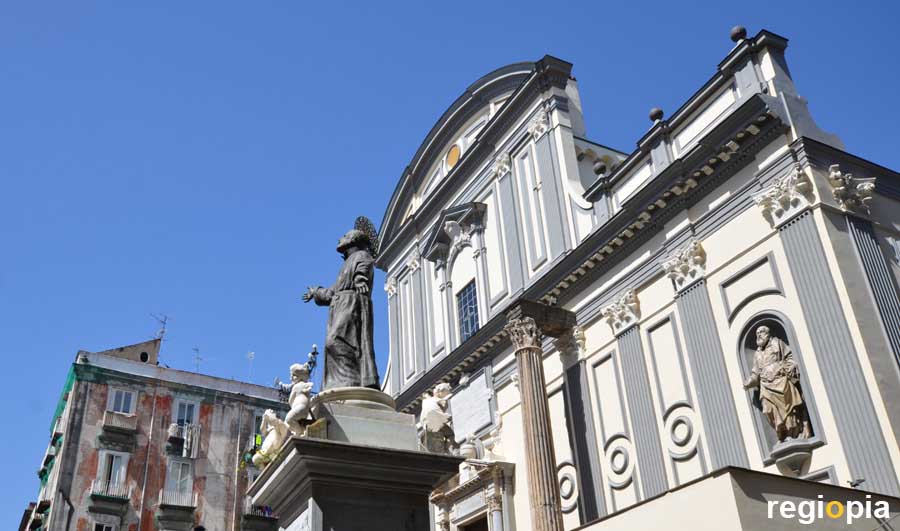
San Paolo Maggiore
In Roman times, the Agora was the center of the ancient city. On the ruins of the "Dioskur Temple", the early Baroque church arose from 1583 until 1603. The façade with its Corinthian columns reminds of the Roman temple.
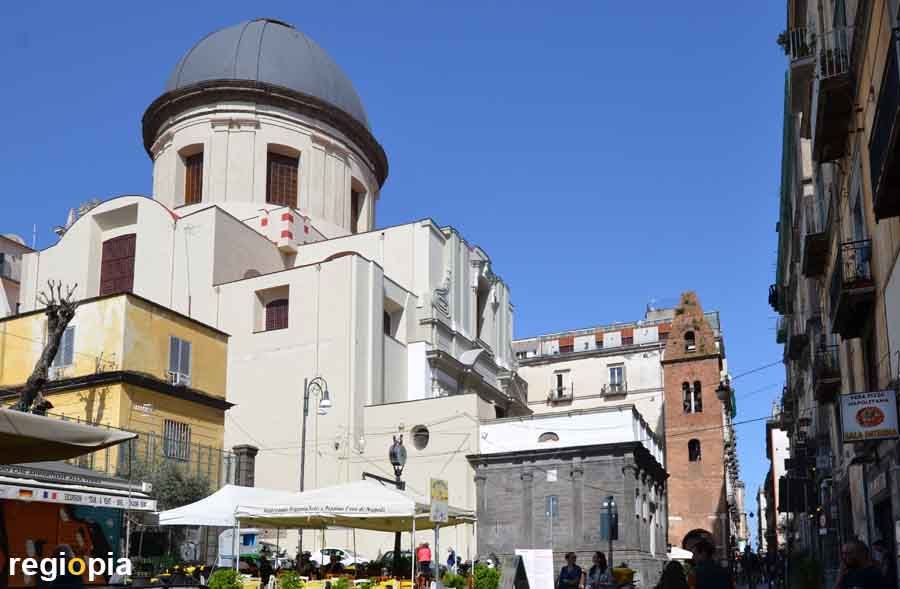
Santa Maria Maggiore
The "Chiesa di Santa Maria Maggiore alla Pietrasanta" was completed in 1678. The baroque church was built by Cosimo Fanzago, who started the construction in 1653. In front of the church is a Romanesque brick campanile dating back to the 11th century.

San Domenico
The church of the Dominican Order was created between 1283 and 1324 as a gothic church. Thomas Aquinas taught in the monastery until 1274, one of the most important Scholastics of his time. The Scholastics reflected about scientific and theological questions. On the square in front of "San Domenico" stands an obelisk, which was erected as a plague column.
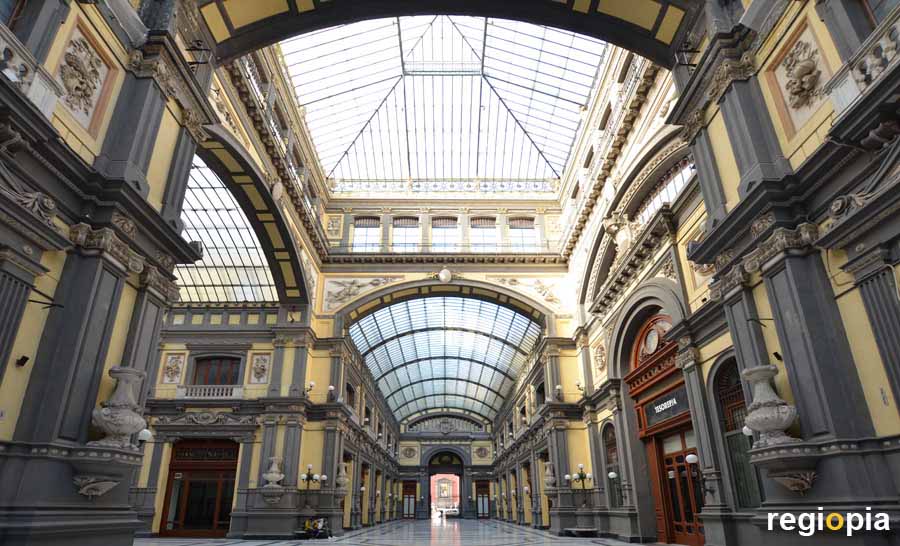
Galleria Principe di Napoli
The Galleria Principe di Napoli was built in 1883 on the site of the Granary of Naples. It was completed before the Galleria Umberto I. The Galleria Principe di Napoli consists of only three wings that meet in the middle under the large dome of iron and glass. The fourth wing could not be realized because the church of Santa Maria di Constantinopoli did not release their land. The shopping arcade is located in the northern part of Via Toledo, which is less crowded than the shopping area. The revenue remained below expectations and the building fell into disrepair until 1965 when the façade collapsed to the National Archaeological Museum. It was discussed about the demolition of the passage, architects made proposals to save the gallery. In 2008, the Galleria Principe di Napoli was finally renovated and shines in new splendor. However, the problem of low visitor numbers does not seem to be solved yet.
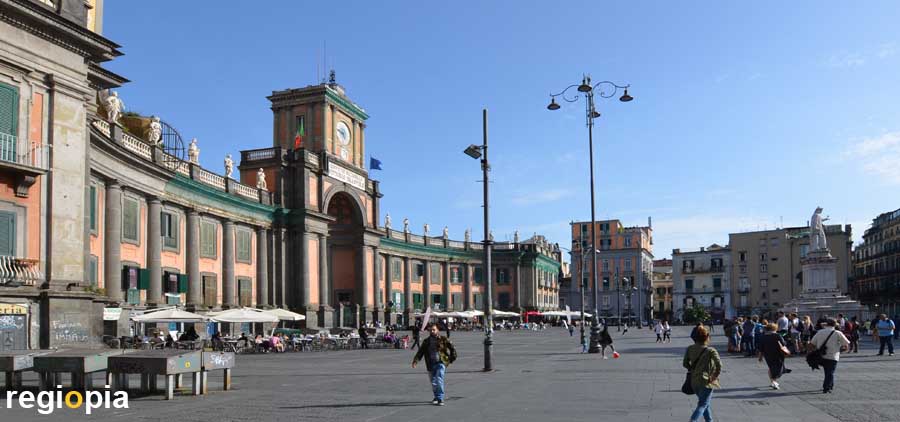
Piazza Dante
At Piazza Dante the busy Via Toledo meets with the Via dei Tribunali. Between the two main streets of Naples is the Porta Alba, which opens to the Piazza Dante. The most striking building on the Piazza Dante is the Baroque ensemble of Convitto Nazionale Vittorio Emanuele II. It was built in 1807 on the grounds of a Jesuit school. The semicircular building with the a portal in the middle gives the square a beautiful frame. The square is named after Dante Alighieri, an Italian poet who was born in Florence in 1265 and died in Ravenna in 1321. Dante triggert the breakthrough of the Italian language. Before Dante literature was still dominated by Latin. Under the Piazza Dante there is a metro station.
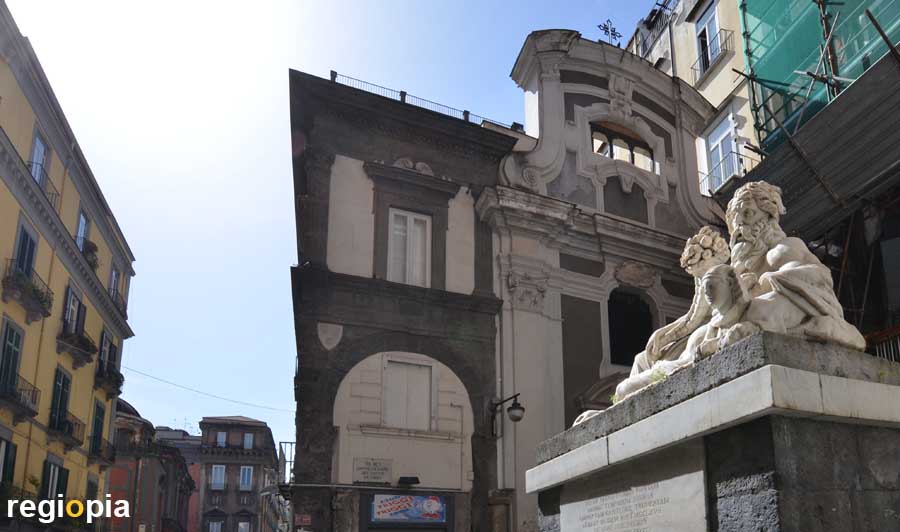
Spaccanapoli
The Piazetta del Nilo is part of the "Spaccanapoli", near the Piazza San Domenico. The "Spaccanapoli" is the most famous street in Naples although it is actually called quite different. Spacca means to split and this street divides the center of Naples into north and south. The road runs 3 km straight through the "Centro antico". The Roman main street "Decumanus Inferior" used to be here. The "Spaccanapoli" begins in the west as Via Pasquale Scura and is then called Via Maddaloni, Via Domenico Capitelli, Piazza Gesu Nuovo, Via Benedetto Croce, Piazza San Domenico Maggiore, Piazetta del Nilo, Via San Biagio Dei Librai, Via Vicaria Vecchia, Via Giudecca Vecchia before it ends as Via Ottavio Tupputi in the east.
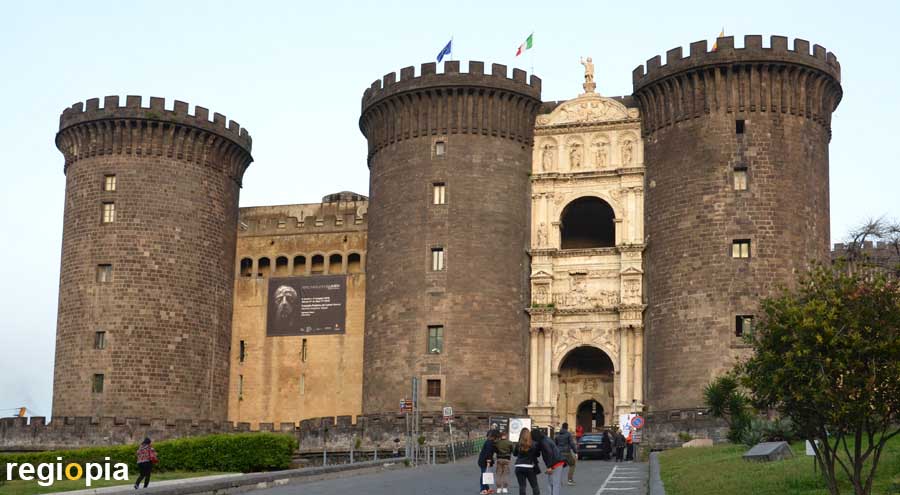
Castel Nuovo
The construction of "Castelnuovo" was begun in 1279 under King Charles I of Anjou. The fortress served as a residence for the rulers of Naples and was rebuilt several times. The bright entrance portal of Francesco Laurana was created around 1455. Today the Castel Nuovo is part of the "Museo civico".
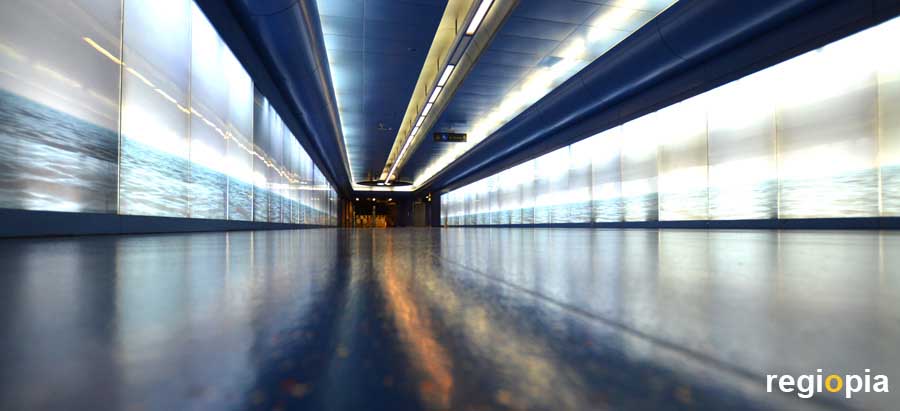
Metro dell Arte
The metro network of Naples is still quite thin for a city of this size and the trains rarely come and thunder through the tunnels as if they were forged from Russian armor steel. But the stations are artistically designed. Not every station is successful but it is still worthwhile to visit some stations. Here is a picture of Toledo metro station by architect and designer Oscar Tusquets Blanca from Barcelona. On the website of the Naples "Azienda Napoletana Mobilita" ANM, there are guided tours of the metro stations.
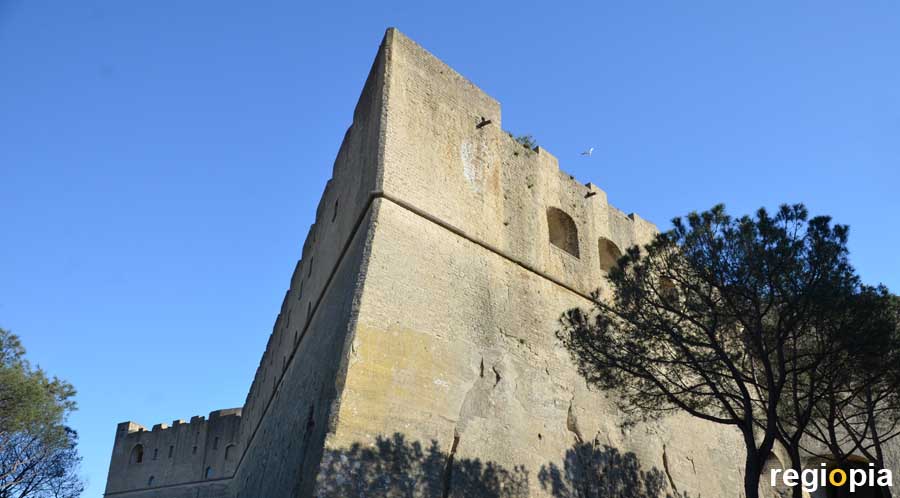
Castel Sant Elmo
On the hill above Naples in 1275 a church was built. The first fortress built Robert of Anjou in 1343, who also used the castle as a palace. During the earthquake of 1456, the towers of the fortress collapsed. Viceroy Don Pedro de Toledo has the fortress rebuilt in 1538 by a Spanish military engineer. When the occupation by the Bourbons came to an end in 1860, the fortress was used as a military prison until 1952. Since 1982, the Castel Sant Elmo is a museum and can be visited. The view over Naples and the Gulf is sensational.
Opening hours: 9:30 am to 6 pm (admission until 5 pm) Closed on Tuesdays
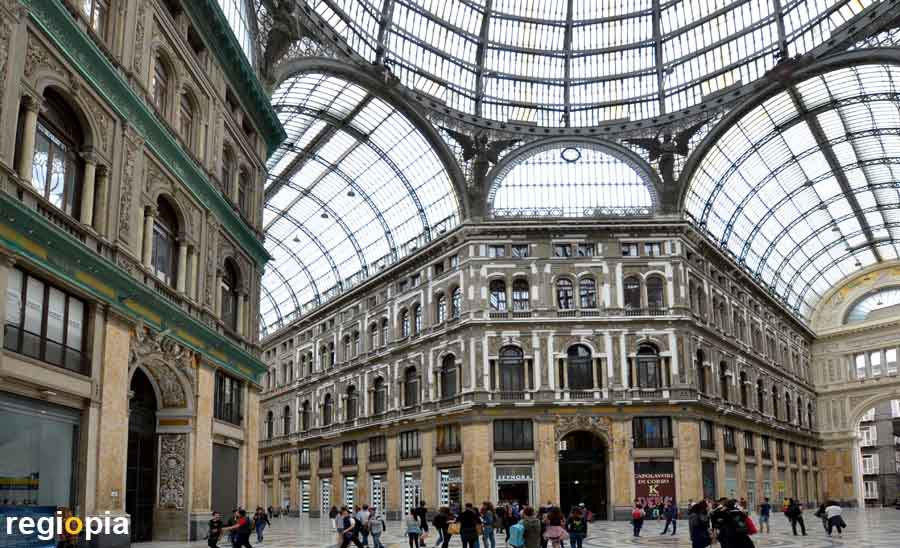
Galleria Umberto I
The Galleria Umberto I was modeled after the Galleria Vittorio Emanuele II in Milan which was opened in 1867. The monumental Galleria consists of two intersecting shopping arcades with glass roofs and a large dome in the center. The Galleria Umberto I was opened in 1890 and named after the second king of Italy. The 58 m high passage was created by the architects Rocco, Curri Boubée and di Mauro.
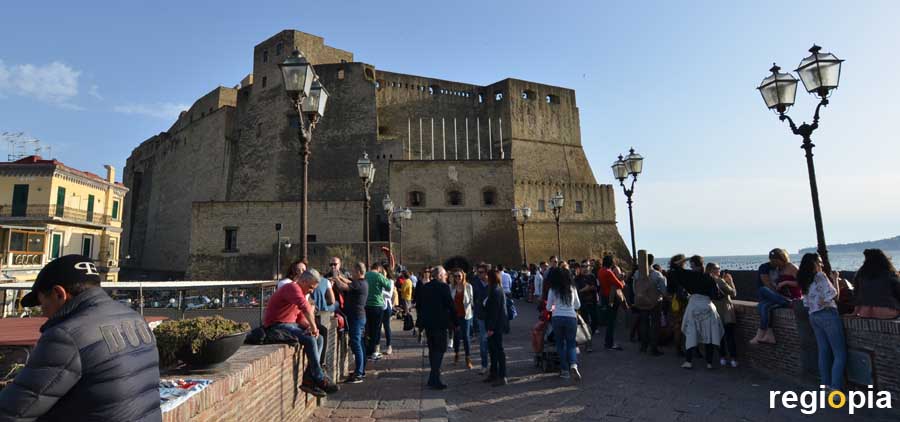
Castel dell Ovo
The rock on which today stands the Castel dell Ovo was the place where the Greeks founded the city of Neapolis about 2,500 years ago. According to Greek legend, the siren Parthenope lived on this rock. She died when Odysseus sailed by without succumbing to her seductive voice. The legendary navigator was tied by his comrades to the mast so as not to succumb to the siren. After the Greeks, Lukull built a villa here. In the 5th century, a church was built, which was built in the 9th century by the fortress. Until 1975, the Castel dell Ovo served military purposes, since it can be visited. From the top you have a beautiful panorama of the coastline on the Gulf of Naples. Another legend relates to the poet Virgil, who was said to have guarded a magical egg in the fortress in the Middle Ages. If Vergil's egg breaks, the fortress is destroyed. And indeed the egg broke down and the fort was destroyed. The egg is gone and the fortress was rebuilt in the 14th century. The Castel dell Ovo is one of the most famous sights of Naples. In the fishing village on Kastell there are many restaurants and a harbor.
Opening hours: Mon-Fri 9 am-7:30 pm, Sat-Sun 9 am-2pm
Map sights Naples
Ads
Sights of Naples
Welcome to Naples
With around 970,000 inhabitants, Naples is the third largest city in Italy, after Rome and Milan. Naples fulfills all of Italy's clichés. This is where pizza was invented, the mafia controls the city administration, there are narrow streets with laundry hanging over the street, Roman ruins (Pompei), a volcano and the azure sea.
Ads
Discover Naples
Where should the hotel be?
There are many cheap hotels around the train station, the area is ugly and dangerous at night. Those who can afford should choose another area. If you want to live centrally, you should look for a hotel around the metro stations "Toledo" or "Municipio".
The underground of Naples
Tours under the city
Entrance in Piazza San Gaetano 68
Ads
Local transport in Naples
How do I get from the airport to the city center?
By bus (buy a ticket in the newspaper shop at the airport) around € 3 or take a taxi for around € 25, depending on the distance.
metro
There are two lines that curve around the historic center of Naples and cross at the central station. A third line (M6) is under construction. You can find information about the subway network at:
Train connections in Italy
hwww.trenitalia.com/trenitalia.html
Ads


